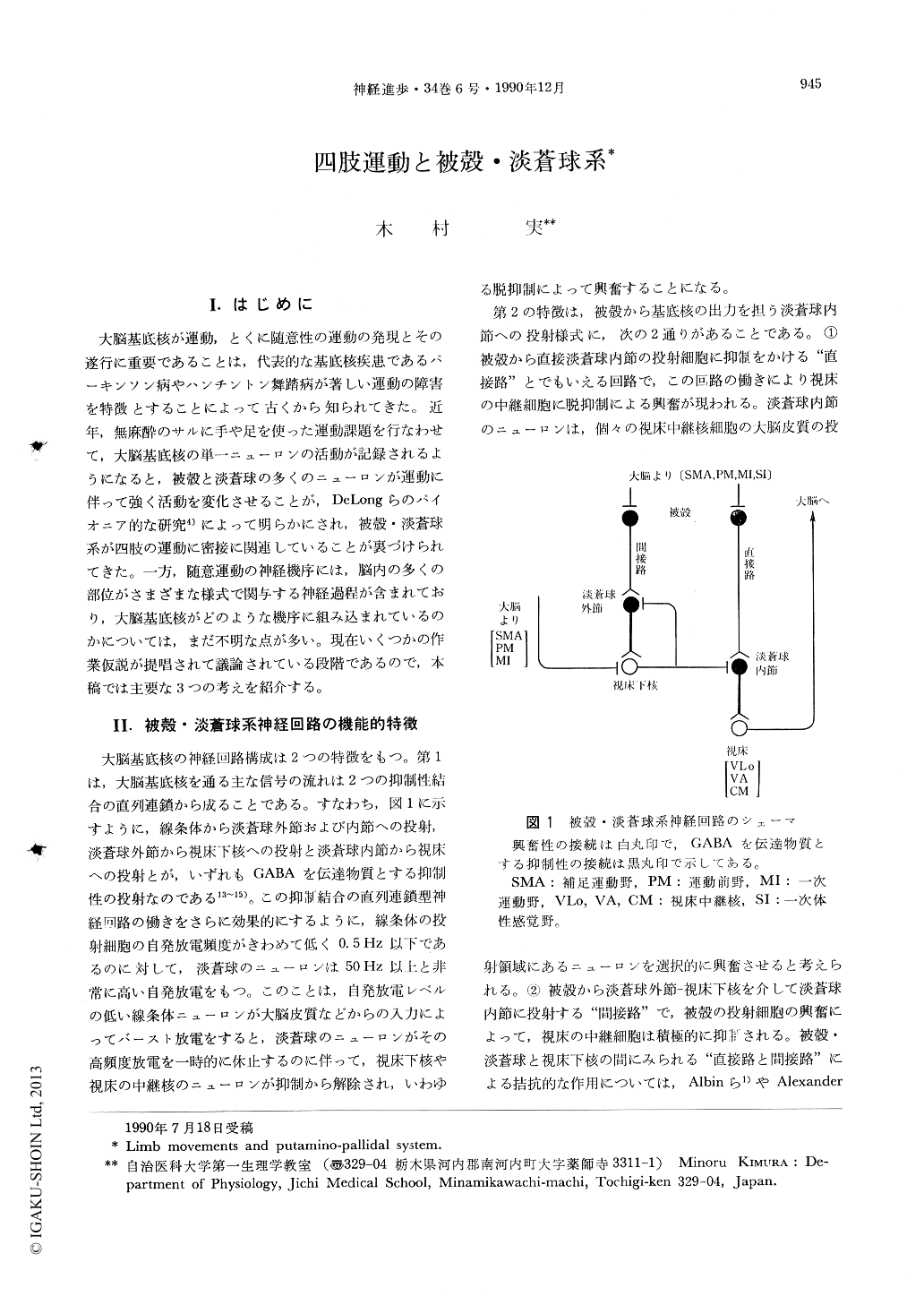Japanese
English
- 有料閲覧
- Abstract 文献概要
- 1ページ目 Look Inside
I.はじめに
大脳基底核が運動,とくに随意性の運動の発現とその遂行に重要であることは,代表的な基底核疾患であるパーキンソン病やハンチントン舞踏病が著しい運動の障害を特徴とすることによって古くから知られてきた。近年,無麻酔のサルに手や足を使った運動課題を行なわせて,大脳基底核の単一ニューロンの活動が記録されるようになると,被殻と淡蒼球の多くのニューロンが運動に伴って強く活動を変化させることが,DeLongらのパイオニア的な研究4)によって明らかにされ,被殻・淡蒼球系が四肢の運動に密接に関連していることが裏づけられてきた。一方,随意運動の神経機序には,脳内の多くの部位がさまざまな様式で関与する神経過程が含まれており,大脳基底核がどのような機序に組み込まれているのかについては,まだ不明な点が多い。現在いくつかの作業仮説が提唱されて議論されている段階であるので,本稿では主要な3つの考えを紹介する。
The putamen and globus pallidus in the basal ganglia have been demonstrated to be specifically involved in the mechanism of voluntary limb movement which is consisted of cerebro-basal ganglia loop as suggested by Alexander et al. (Alexander GE et al., 1986 ; Alexander and Crutcher, 1990). On the other hand, the way in which the putamino-pallidal system is involved in the mechanism of limb movement is still far from clear. This review introduces, first, fundamental neural circuitry implemented in the basal ganglia and its functional implications : second, three current hypothesis on the role of the basal ganglia especially the putamino-pallidal system in the voluntary limb movements.

Copyright © 1990, Igaku-Shoin Ltd. All rights reserved.


